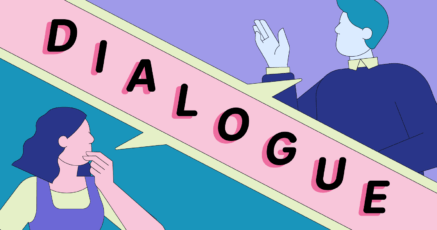
In the vast landscape of literature, the art of crafting dialogues holds a unique power to transport readers into the hearts and minds of characters. One intriguing aspect of this craft is the use of dialects and accents, allowing writers to infuse their narratives with the rich, diverse cadence of real-world speech. In this blog, we explore the nuances, challenges, and the undeniable charm of writing dialogues in dialects, especially when characters boast strong, distinctive accents.
The Melody of Voices:
Dialects and accents are the soulful melodies that shape our spoken language. They carry the echoes of culture, region, and history, creating a vivid tapestry of communication. When woven into the dialogues of characters, they have the power to add authenticity, depth, and a sense of place to a narrative. The challenge, however, lies in striking the right balance between linguistic accuracy and readability.
Navigating Authenticity:
While the desire to capture authenticity is commendable, writers must tread carefully to avoid falling into the trap of caricature or perpetuating stereotypes. The key is to infuse authenticity into the dialogue while ensuring that it remains accessible and respectful to readers from all backgrounds. Striking this delicate balance demands a keen understanding of the nuances inherent in different dialects and accents.
Challenges of Conveying Accents in Text:
Writing dialogues in dialects with strong accents poses unique challenges. How does one convey the lilt of a Southern drawl or the staccato rhythm of a Brooklyn accent through the written word? Striking a balance between readability and accuracy becomes crucial. Writers may experiment with phonetic spellings, subtle linguistic cues, or even the rhythm and pacing of the dialogue to capture the essence of an accent without overwhelming the reader.
Cultural Sensitivity:
In a world that increasingly values cultural sensitivity, writers must approach the task of incorporating dialects with care. Stereotyping, misrepresentation, or the use of dialect solely for comic relief can perpetuate harmful biases. By researching and understanding the cultural context, writers can ensure that their portrayal of dialects and accents is both authentic and respectful.
Building Empathy Through Diverse Voices:
Despite the challenges, writing dialogues in dialects presents a unique opportunity to broaden the literary landscape. It allows readers to empathize with characters from diverse backgrounds, fostering a deeper understanding of the myriad ways people communicate. Dialects can serve as a bridge, connecting readers to unfamiliar cultures and experiences, creating a more inclusive and enriching reading experience.
Tips for Effective Dialogue Writing in Dialects:
- Subtlety is Key: Rather than relying on heavy-handed phonetic spellings, consider incorporating subtle linguistic cues and rhythms to convey the essence of an accent.
- Research Thoroughly: Immerse yourself in the culture and linguistic nuances associated with the dialect or accent you aim to portray. Authenticity stems from a deep understanding of the context.
- Beta Readers from the Community: If possible, seek feedback from individuals who belong to the community or region you are representing. Their insights can provide invaluable guidance.
- Use Dialogue Tags Wisely: Employ dialogue tags, actions, and expressions to complement the spoken words, providing additional context and nuance.
Conclusion:
Writing dialogues in dialects, especially when characters possess strong accents, is a delicate dance between authenticity and accessibility. The endeavor requires writers to embrace the challenge with sensitivity, research, and a commitment to breaking down stereotypes. When executed thoughtfully, the use of dialects enriches the literary landscape, allowing readers to explore the diverse tapestry of human communication and fostering a deeper connection between characters and their audience. As we navigate the intricate cadences of speech, let us celebrate the symphony of voices that makes literature a vibrant reflection of the world we live in.


